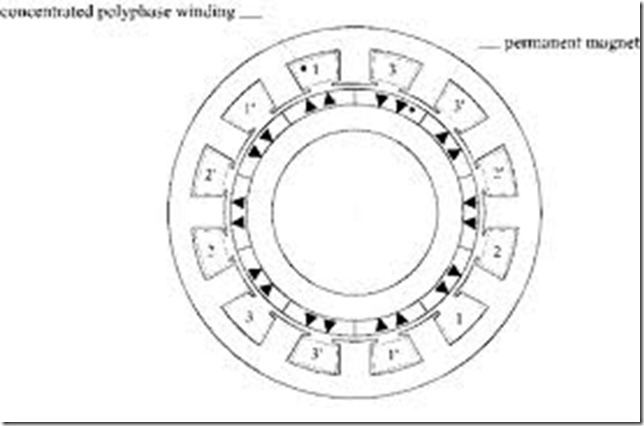Production of a Sinusoidal EMF in a Synchronous Generator
The stator winding of a synchronous machine is constructed in the same fashion as that of an induction machine. However, in an induction machine the emfs in the stator phase windings are induced by a rotating magnetic field. In a synchronous machine the emfs in the stator phase windings are induced by the magnetic field that is set up by the current in the winding of a revolving rotor.
At no-load the magnetic flux linking with one turn of the phase winding in the stator of a synchronous machine ranges between +Φ0m and -< Φ0m , where Φ0m is the maximum magnetic flux linking one turn, as produced by the magnetic field of the rotor revolving at an angular velocity ɷ .
It has been shown in Sec. 2.5 that in such a case the emf induced in one turn of a phase winding varies sinusoidally with an amplitude
E0m = ɷΦ0m
Since the coils making up each phase of the stator winding are distributed among several slots, their emfs are combined vectorially , which fact is accounted for in calculating the phase emf by applying the winding factor kw < 1 (see Sec. 14.5).
Thus, the rms value of phase emf in a synchronous machine with . w turns per phase is
E0 = 4.44 fwkwΦ0m = ɷΨ0 (15.2)
where Ψ0 is the rms flux linkage of the rotor magnetic field with the stator phase winding.
If we wish to obtain a sinusoidal emf in the stator phase turns, it is essential that the magnetic induction produced in the air gap by the magnetic field of the rotor be distributed sinusoidally all the way round the rotor. In a salient-pole-rotor machine the air gap gradually increases from the middle of a pole towards its tips, so the magnetic induction is distributed in inverse proportion to the reluctance of the magnetic path, that is, other than sinusoidally . A sinusoidal distribution is assured through the use of suitably shaped pole pieces.
Obviously, this device is inapplicable to high-speed cylindricalrotor machines. The usual practice in such cases is to dispose the field coils all the way round the rotor in such a way that the distribution of magnetic induction is trapezoidal which is a good approximation to a sinusoidal distribution. The higher harmonics in the emf waveform are suppressed by utilizing the special properties of the distributed stator winding.

